Every student deserves a learning environment that accommodates their unique needs and abilities. When classrooms and other learning spaces are intentionally designed to remove barriers, support access, and foster the academic and social-emotional development of students with sensory processing needs and cognitive or physical challenges, then students are much more likely to succeed.
As of 2022-23, the latest year for which federal data are available, the number of students ages 3–21 who received special education and/or related services under the Individuals with Disabilities Education Act (IDEA) was 7.5 million, or about 15 percent of all public school students. About two-thirds of these students spend most of their time in general education classrooms, Education Week reports—up from one-third in 1989.
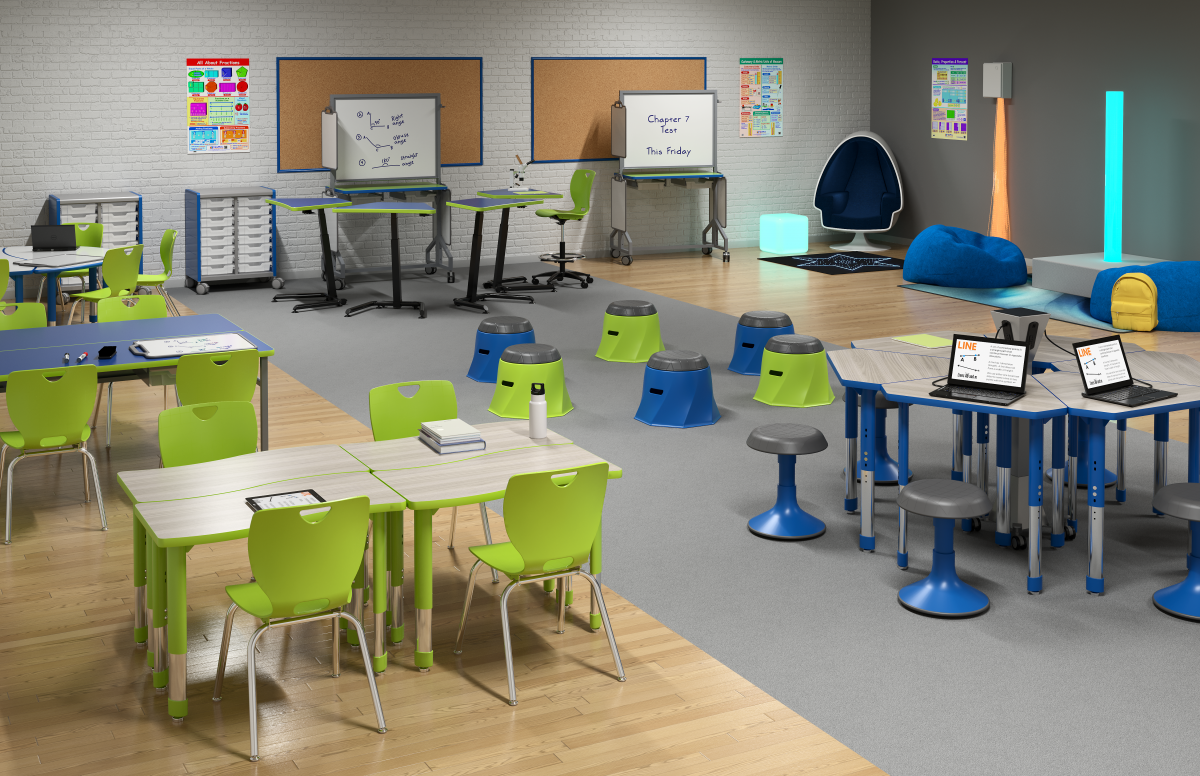
How a learning space is designed, furnished, and equipped plays a critical role in the success of these students. Creating multiple learning spaces within a classroom, such as spaces to promote self-regulation and spaces for small group learning and one-on-one instruction, can help educators meet all students’ needs and is often required as part of a student’s IEP.
Creating intentional and inclusive spaces for everyone increases the feeling of belonging and acceptance, and it allows students to benefit from choices in their learning environment. What’s more, features such as IEP accommodations, assistive technology devices for students, and calming spaces or other sensory environments that meet the needs of students with sensory processing challenges can help everyone thrive—academically, socially, and emotionally.
Here are six key elements of a learning environment that effectively supports all students, including those with special needs.
Full accessibility for everyone
Make sure every part of the space is accessible for students with various physical needs. For instance, there should be clear pathways between tables, desks, and learning stations that can accommodate a wheelchair if necessary. Think about how to make learning spaces fully ADA compliant. The width, depth and height of the frame of a desk or table should be considered.
Assistive technology devices for students allow those with physical delays or challenges to access the content and the learning environment. Learning space design teams should consider which pieces of equipment should be utilized or what kinds of furniture should be placed in classrooms to promote accessibility and equal opportunities for everyone. Students in wheelchairs should have opportunities to access their school day outside of their wheelchairs. Adaptive seating, standers, and gait trainers are all examples of providing complete access for students.
Clear structure and organization
An uncluttered and well-organized learning space minimizes distractions, allowing students to focus on instruction. Posting daily schedules, practicing routines, and outlining the expectations for each learning space creates a safe and predictable learning environment. It also helps students understand what they can expect from each learning day or period. For instance, learning stations and areas with clearly defined purposes help establish classroom routines and ease transitions from one type of learning activity to another.
The strategic use of furnishings such as dividers, shelving and carpets can help define each learning space so that students understand its purpose. Shelving, cabinets, and other storage units also play a key role in helping to keep learning spaces well organized and clutter-free.
A sensory-friendly design
Students who have sensory processing delays may be overly sensitive to environmental factors such as light, sound, and textures. They may need quiet spaces or breaks throughout their day to refocus. These factors should be carefully considered when designing learning environments that can support all students.
To help students focus and learn more effectively, schools should use natural lighting wherever possible and avoid the use of fluorescent lights, instead choosing warmer, recessed lighting sources. If replacing bulbs or light fixtures is out of the question, light shades or filters can provide an affordable option for softening classroom lighting.
Sound amplification systems can help students who are hard of hearing or who have trouble drowning out background noise to focus on what the teacher is saying, and sound-absorbing panels can also cut down on ambient noise. While it might be cost-prohibitive to install sound-absorbing panels in classrooms, they make a lot of sense in large, open spaces such as media centers.
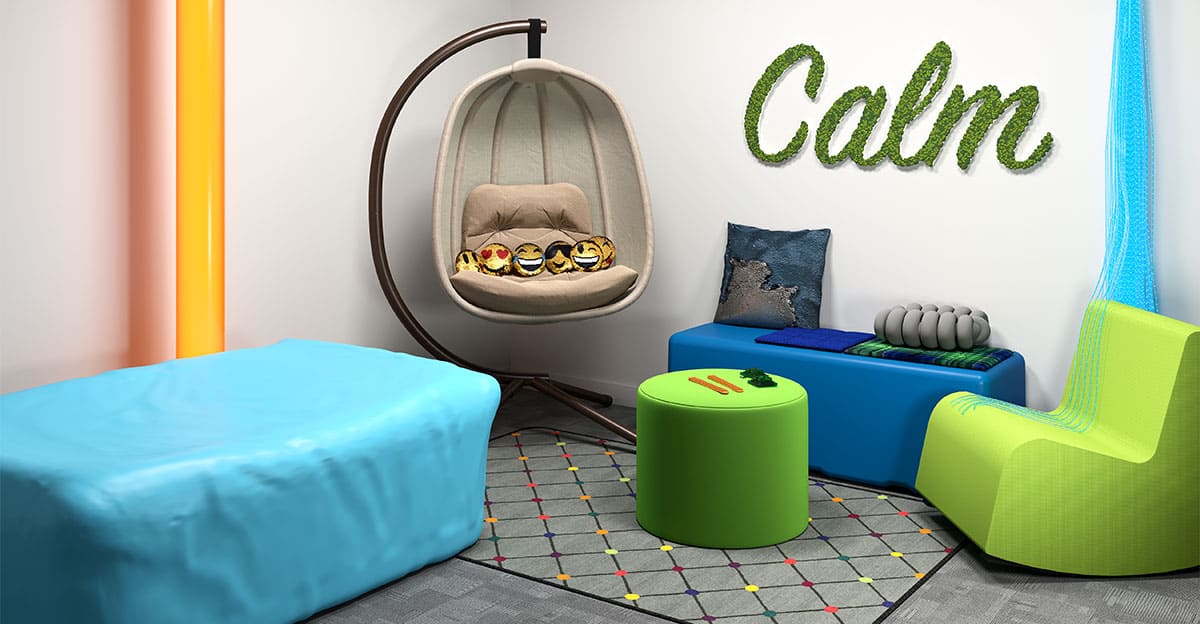
Creating spaces that provide opportunities for students to engage their senses, as well as quiet, calming spaces that allow students to step away from being overstimulated, increases their ability to focus and be ready to learn in the classroom setting.
Choice and flexibility
Instead of a one-size-fits-all approach to instruction, teachers are using strategies that aim to reach all students, such as Universal Design for Learning. UDL calls for using instructional materials and methods that give students multiple means of expression, representation, and engagement. By approaching instruction in many different ways, the idea is that teachers will find a method that resonates with each individual learner.
Integrating choice and flexibility into the design of a learning environment is simply taking the concept of UDL and applying it to the furniture as well.
Giving students multiple options in where to sit and work, such as traditional tables and chairs, soft seating, seating with movement, or standing desks, promotes responsible decision-making and builds confidence in students, which helps with their ability to focus, acquire new skills, and increase social-emotional development. It also makes classrooms more welcoming and accommodating for students with different needs and preferences.
Offering a variety of seating options—with opportunities to move and sit backwards, forwards, or sideways, as well as different fabrics and surface types such as wood/laminate, plastic, upholstered fabric, and foam—helps students find their place where they can be most comfortable and fully engaged in their learning. For students with physical disabilities, seating that provides support of the head, core, and legs may be considered. Seating with high backs or soft seating that students can sink into gives sensory seekers options that make them feel enveloped in their seating.
Quiet, calming spaces
Students who find themselves overstimulated within the learning environment might need some time to step away by themselves and self-regulate. Quiet, calming spaces give students the opportunity to do this effectively. These spaces might be separate areas of the classroom that are available to students who need private moments of downtime, or they might be fully self-contained sensory environments such as Snoezelen rooms.
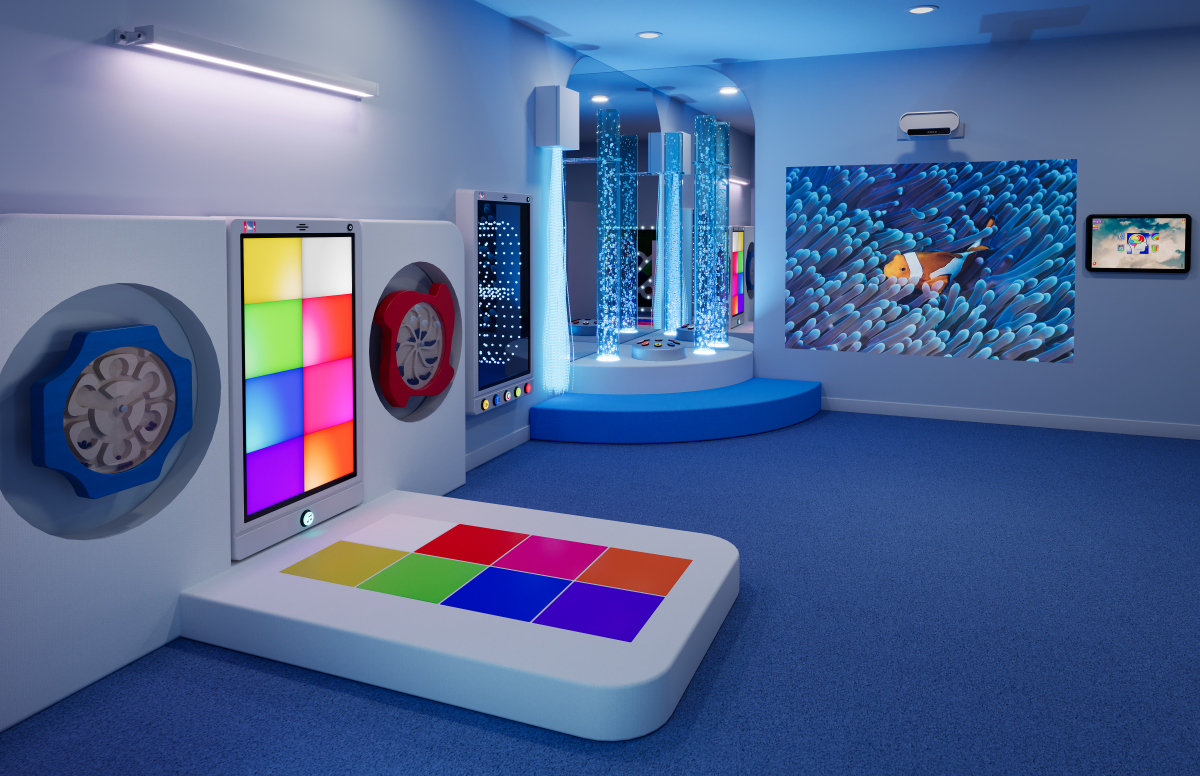
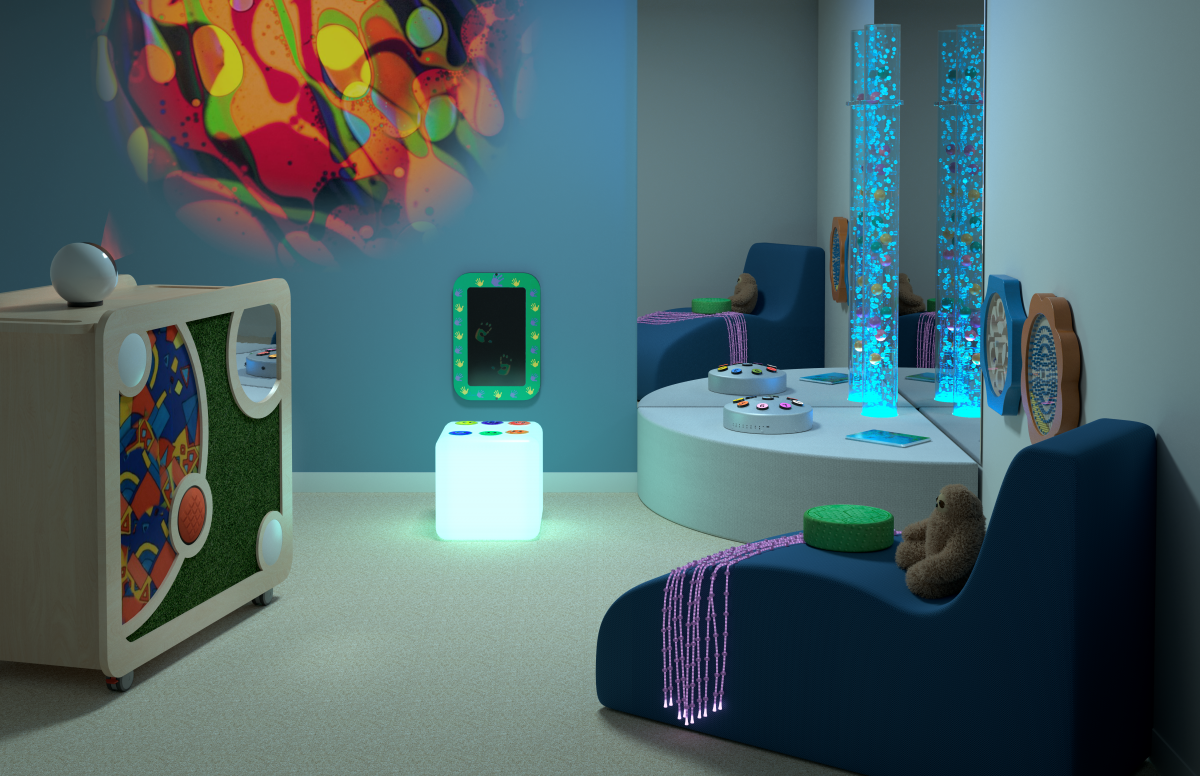
Calming spaces are typically furnished with equipment and materials that can help students relax, calm down, and regulate their emotions, such as sensory pods, tactile panels, fiber optics, vibro acoustics, and fiber optic tunnels.
Opportunities for movement
Some students need an outlet to move before they can reach optimal learning, and that’s especially true for students with sensory processing delays or those who have difficulty self-regulating. Furniture that allows for movement provides a more appropriate opportunity to meet the individual needs of each student.
For instance, “fidget” seating and “wobble” stools allow for movement by letting students twist, rock, or move in other ways while they’re learning, without disrupting the rest of the class. Bands around the feet of chairs, textured seat cushions, or stationary bikes with a desk top are other ways to provide active seating options for students.
Learning space design is critical in meeting all students’ needs
Educators are keenly aware that students have very diverse learning needs, and most are skilled at designing learning activities and experiences that can accommodate these differences. But sometimes, the role of the physical learning space can be overlooked. By incorporating these six components, schools can create learning environments that effectively support all students, including those with special needs.
School Specialty has been helping educators design, furnish, and equip learning environments that accommodate the needs of all learners for decades. To learn how our Projects By Design team can help you design highly effective learning environments that support special needs students, call (800) 305-0174, email projectsbydesign@schoolspecialty.com, or go to www.schoolspecialty.com/projects-by-design.
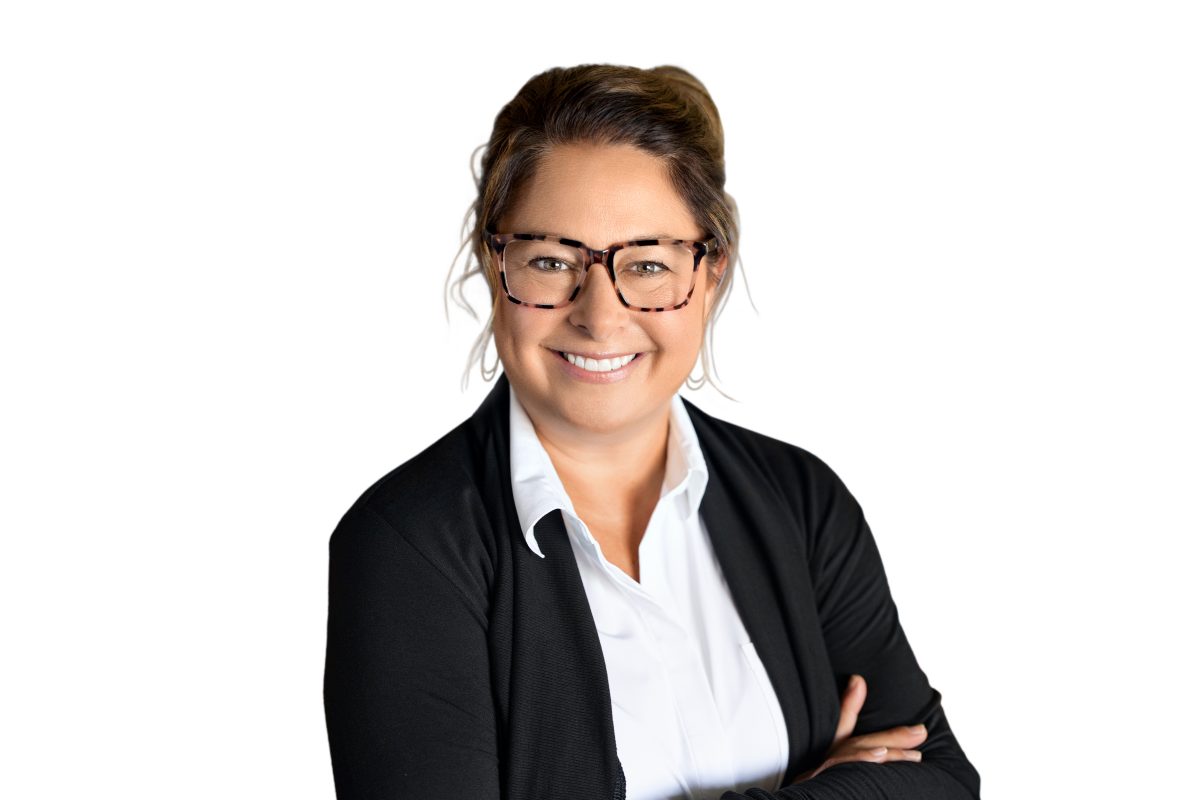
LYNNETTE CORNETT, SPECIAL NEEDS; ADAPTED ART & PE
Lynnette has a Master of Educational Leadership with certifications of Special Education Director and
Building Principal PK-12. She served as a special education teacher and 8 years as Special Education
Director in Missouri, helping supervise a 175-member staff and 450 students with IEPs. Her responsibilities included the oversight of special education compliance, services and program development in addition to professional development, diagnostics, staff evaluations, training and family liaison. Lynnette is a passionate advocate of students with disabilities. She cultivates problem solving among special educators and encourages out of the box thinking to meet the individualized needs of students to promote their fullest potential in the least restrictive educational setting.